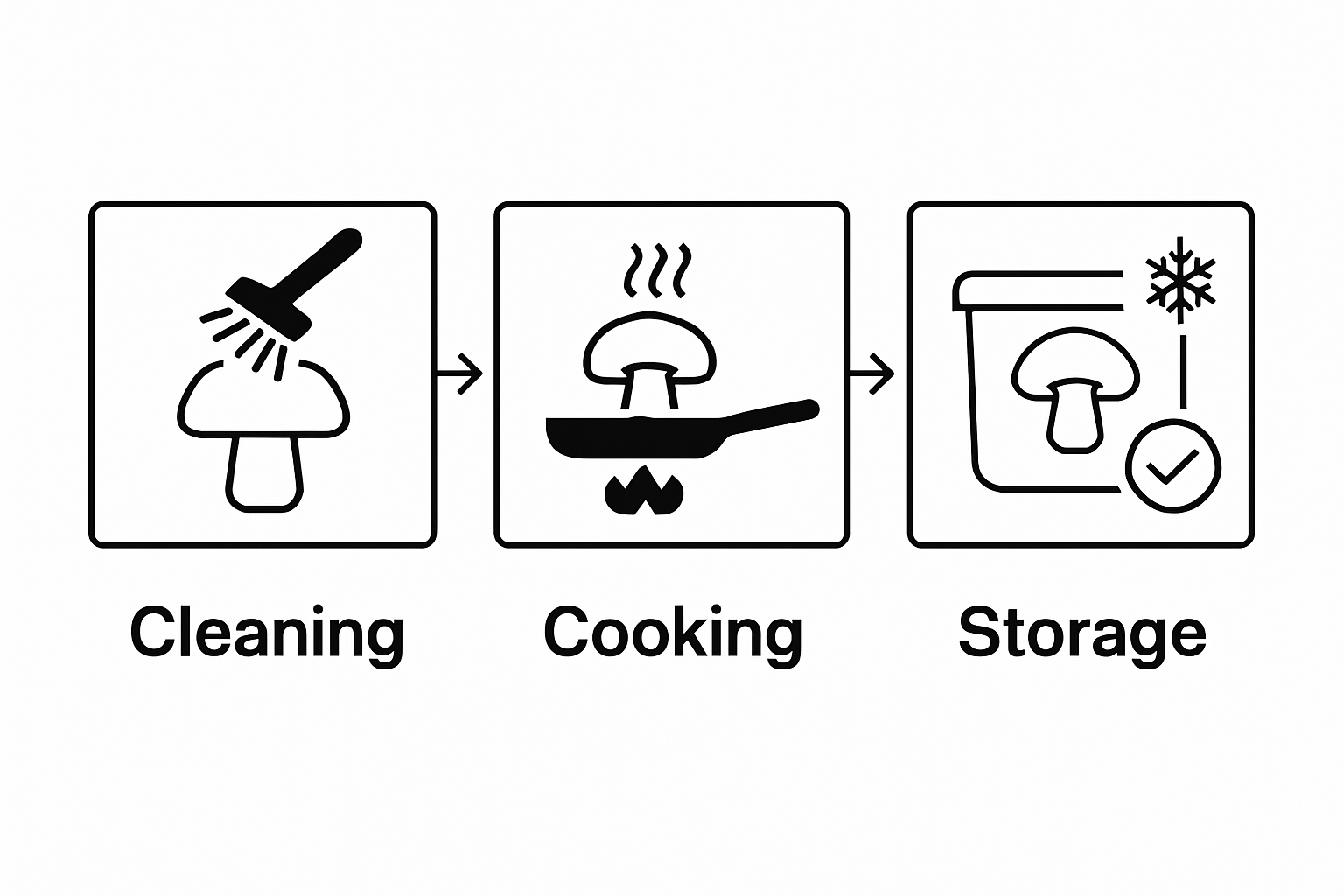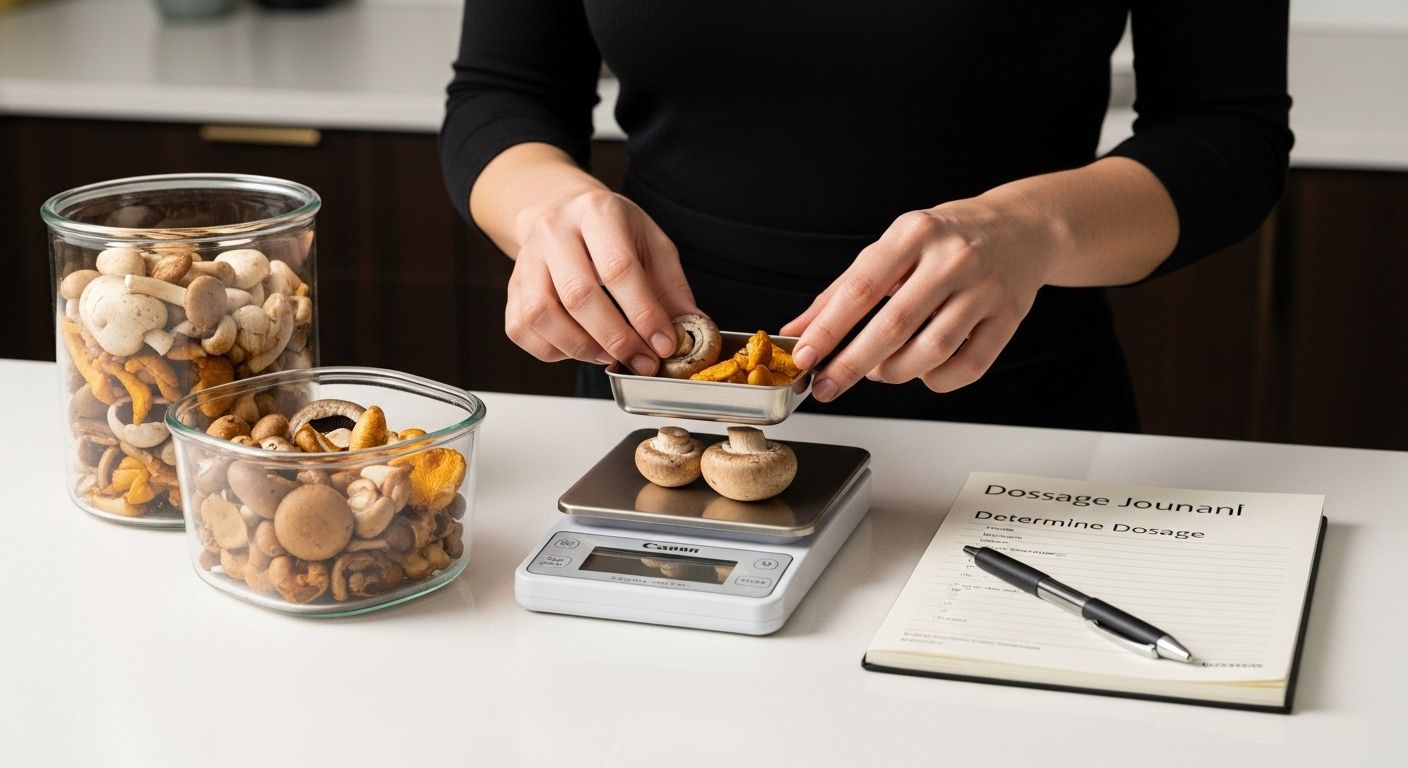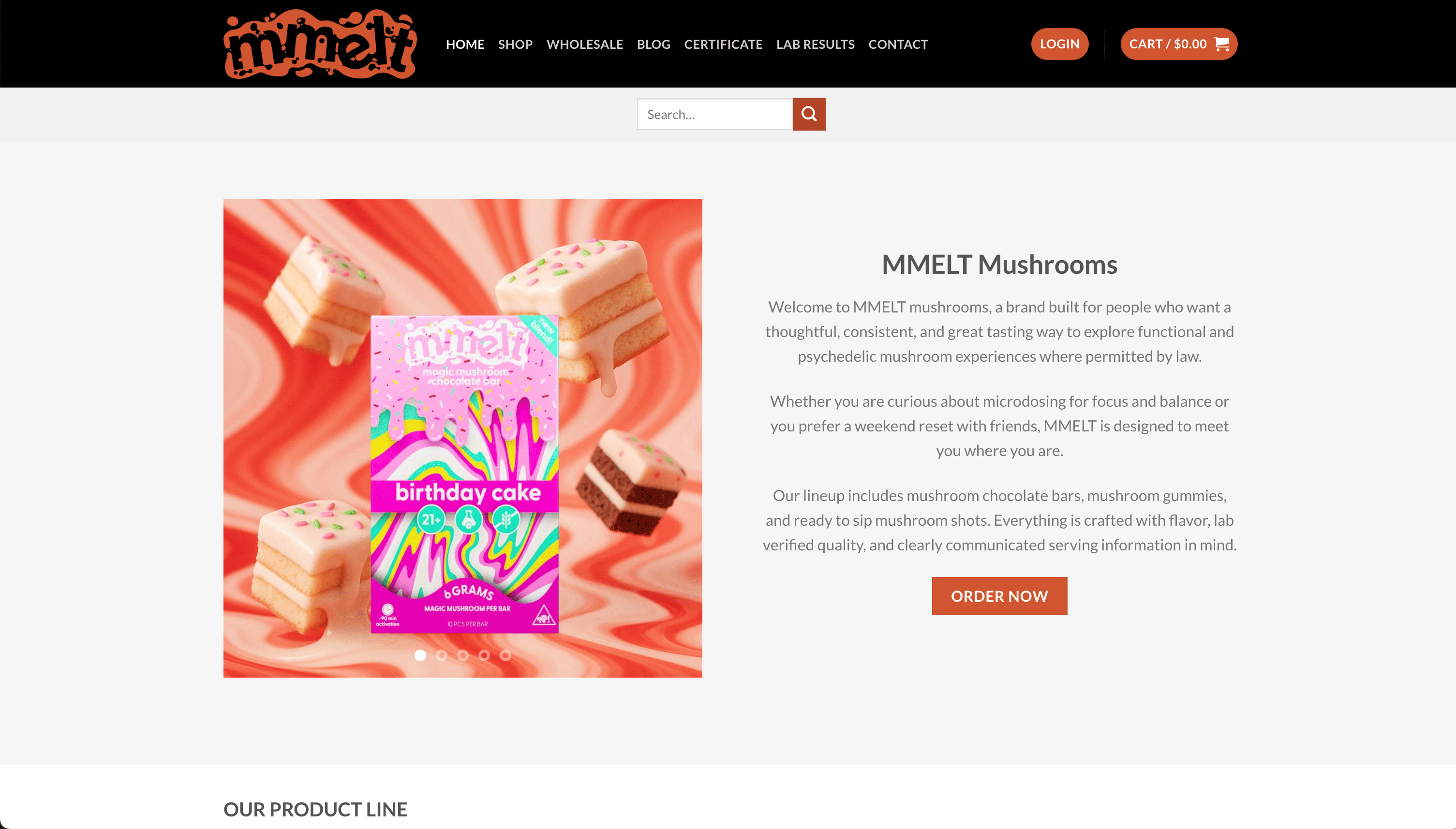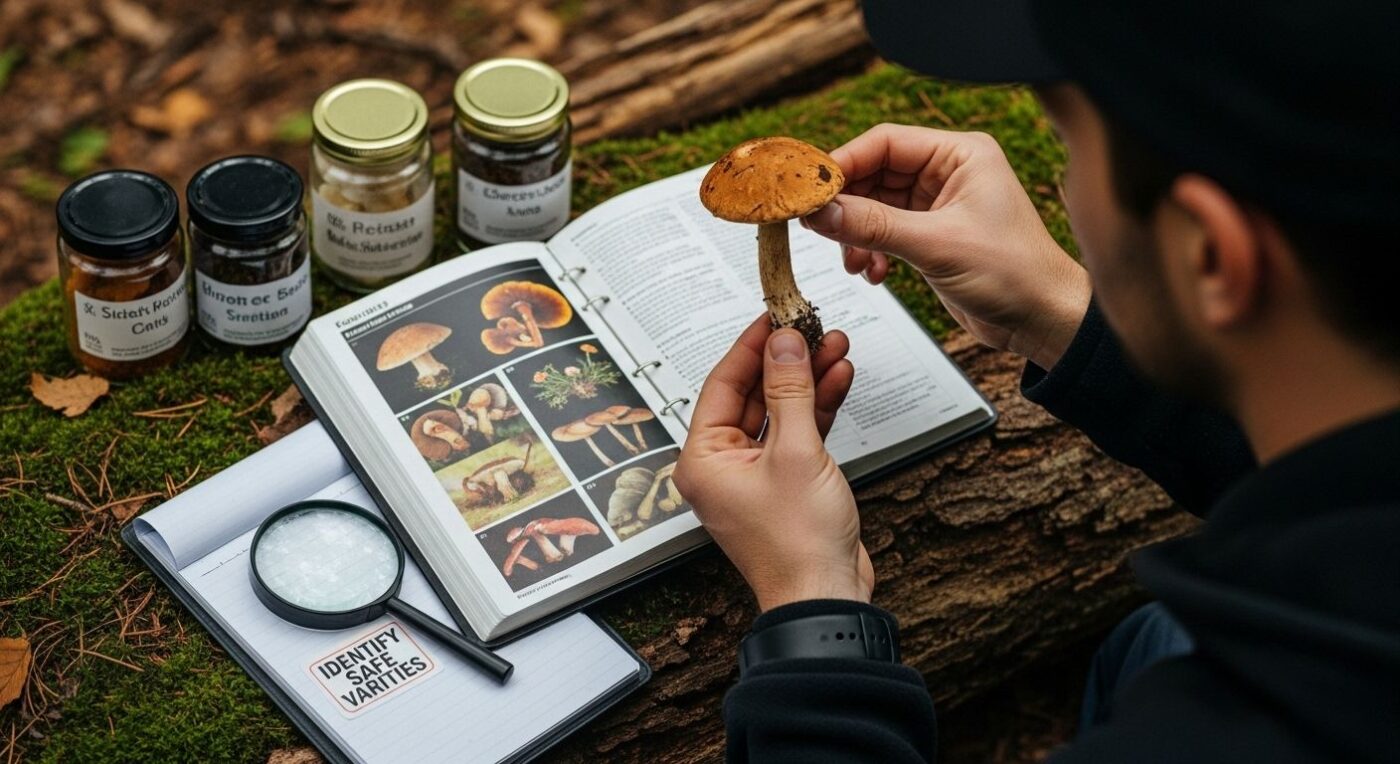Blog
Mastering Mushroom Edible Consumption Steps for Health Benefits
Mushrooms can look harmless, but accurate identification is everything when it comes to eating them safely. Wild mushrooms are responsible for over 7,000 poisoning cases each year in the United States, and many edible varieties have toxic lookalikes hiding in plain sight. The real surprise? Even seasoned mushroom hunters rely on strict checklists and professional verification—because with mushrooms, guessing is never worth the risk.
Table of Contents
- Step 1: Identify Safe And Edible Mushroom Varieties
- Step 2: Gather Necessary Tools For Preparation
- Step 3: Prepare Mushrooms For Consumption
- Step 4: Determine Appropriate Dosage For Your Needs
- Step 5: Consume Mushrooms And Monitor Effects
- Step 6: Evaluate Your Experience For Future Use
Quick Summary
| Key Point | Explanation |
|---|---|
| 1. Accurate mushroom identification is crucial | Misidentifying mushrooms can lead to severe health risks, making precise identification essential before consumption. |
| 2. Use proper tools for preparation | High-quality tools like stainless steel knives and digital thermometers ensure safety and preserve nutritional value during mushroom preparation. |
| 3. Monitor dosage based on individual factors | Tailor mushroom dosages by considering your body weight and health needs, starting with low doses and adjusting gradually. |
| 4. Track post-consumption effects diligently | Monitoring effects post-consumption helps identify how mushrooms affect your energy levels, cognitive function, and general well-being. |
| 5. Evaluate your consumption experiences | Regular assessment of your experiences with different mushrooms informs future choices and enhances safety and health outcomes. |
Step 1: Identify Safe and Edible Mushroom Varieties
Successfully navigating mushroom consumption begins with one critical foundation: accurate identification. Mushroom varieties range dramatically in their safety profile, with some offering extraordinary health benefits while others can cause severe toxicity. Professional foragers and mycologists understand that precise identification isn’t just recommended it’s absolutely essential for safe consumption.
The process of identifying safe mushroom varieties requires systematic observation and thorough knowledge. Start by understanding visual characteristics like cap shape, gill structure, stem composition, and spore color. Professional field guides and expert resources become invaluable tools in this process. Explore our guide on mushroom identification techniques to deepen your understanding of distinguishing edible from dangerous specimens.
Key visual identification markers include consistent color patterns, uniform texture, absence of unusual discolorations, and predictable growth formations. Advanced identification often requires microscopic spore analysis and comprehensive environmental context. Experienced mushroom enthusiasts recommend collecting multiple reference images from different angles, noting precise location details, surrounding vegetation, and substrate conditions.
Professional taxonomic resources recommend collecting comprehensive specimen information before consumption. Critical documentation should include:
- Detailed photographs of entire mushroom structure
- Precise geographical location
- Substrate and surrounding ecological context
- Specific growth characteristics
- Potential lookalike species in the region
Consult multiple expert sources and consider professional verification before consuming any wild-gathered mushrooms. Mycological societies, university extensions, and specialized botanical research centers offer verification services that can definitively confirm species safety. Remember: when in doubt, do not consume. Your health and safety are paramount in mushroom identification and consumption.
Step 2: Gather Necessary Tools for Preparation
Preparing mushrooms requires precision and the right equipment to ensure safety, quality, and optimal nutritional preservation. Professional mushroom preparation demands a systematic approach with carefully selected tools that transform raw specimens into consumable delicacies. Check out our mushroom preparation guide for more insights into selecting the perfect equipment.
Your preparation toolkit should include multiple specialized instruments designed for different stages of mushroom processing. High-quality stainless steel knives with sharp, clean blades become essential for precise cutting and trimming. Ceramic blades offer an alternative with superior edge retention and reduced potential for metal contamination. Professional chefs and mycological experts recommend dedicated cutting surfaces made from non-porous materials like tempered glass or medical-grade stainless steel to prevent cross-contamination.
Temperature control equipment plays a crucial role in mushroom preparation. Digital thermometers with precise measurements help monitor cooking temperatures, ensuring optimal texture and nutrient preservation. Specialized dehydrators with adjustable temperature settings enable controlled drying processes that maintain mushroom integrity. For those interested in more advanced preparation techniques, vacuum sealers provide excellent preservation methods, extending the shelf life of processed mushrooms.
Essential tools for comprehensive mushroom preparation include:
- Sharp stainless steel or ceramic cutting knives
- Non-porous cutting boards
- Digital food-grade thermometer
- Dehydrator with adjustable temperature settings
- Clean storage containers
- Precision kitchen scale
- Disposable gloves
- Cleaning brushes for gentle mushroom surface preparation
Professional mushroom handlers understand that tool sanitization is as critical as the preparation process itself. Thoroughly clean and sterilize all equipment before and after use, using food-safe sanitizing solutions and allowing proper drying time. Your preparation toolkit represents an investment in culinary excellence and personal safety, transforming raw mushrooms into safe, nutritious, and delectable ingredients.
Below is a table summarizing the essential tools required for safe and effective mushroom preparation, along with their primary purpose and any important notes about usage.
| Tool | Purpose | Notes |
|---|---|---|
| Stainless steel or ceramic knives | Precise cutting and trimming | Sharp, easy to sanitize |
| Non-porous cutting boards | Clean cutting surface, prevents contamination | Prefer tempered glass or stainless steel |
| Digital food-grade thermometer | Monitor cooking temperatures | Ensures optimal texture and safety |
| Dehydrator with temperature settings | Controlled drying and preservation | Enables adjustable temperature control |
| Precision kitchen scale | Accurate measurement of dosages | Supports dosage consistency |
| Clean storage containers | Hygienic storage of prepared mushrooms | Airtight and easy to clean |
| Cleaning brushes | Gentle removal of dirt and debris | Soft-bristled for delicate surfaces |
| Disposable gloves | Prevents cross-contamination and exposure | Use during cleaning and handling |
Step 3: Prepare Mushrooms for Consumption
Transforming raw mushrooms into safe, nutritious, and delectable ingredients requires a methodical approach that preserves their unique flavor profiles and nutritional integrity. Proper preparation is the critical bridge between identification and consumption, ensuring you maximize both safety and culinary potential. Explore our comprehensive mushroom preparation techniques to enhance your understanding of optimal processing methods.
Cleaning represents the first and most crucial stage of mushroom preparation. Professional mycologists recommend using soft-bristled brushes or clean, slightly damp paper towels to gently remove dirt and debris. Avoid submerging mushrooms in water, as excessive moisture can compromise their delicate cellular structure and accelerate spoilage. For wild-gathered specimens, meticulous inspection becomes paramount. Carefully examine each mushroom, removing any visibly damaged or discolored sections, and trim stems where necessary.
Cooking methods dramatically impact mushroom nutritional profiles and taste experiences. According to professional culinary research, microwaving and grilling emerge as superior preparation techniques that preserve antioxidant activities and minimize nutrient loss. Brief, controlled heating allows mushrooms to develop rich umami flavors while maintaining their structural integrity. Recommended cooking times typically range between 1.5 to 4.5 minutes, depending on the specific mushroom variety and desired texture.
Essential preparation steps include:
- Gentle surface cleaning with soft brushes
- Careful visual inspection for damage
- Precise trimming of stems and imperfections
- Selection of appropriate cooking method
- Controlled heating duration
- Immediate cooling and proper storage
Temperature control and timing represent critical factors in mushroom preparation. Use digital thermometers to monitor cooking temperatures, ensuring consistent heat distribution and preventing nutrient degradation. Professional chefs recommend maintaining moderate temperatures between 140-180 degrees Fahrenheit, which effectively eliminates potential pathogens while preserving the mushroom’s nutritional essence. Always allow prepared mushrooms to cool completely before storage, preventing moisture accumulation and potential bacterial growth.

Step 4: Determine Appropriate Dosage for Your Needs
Navigating mushroom consumption requires a nuanced understanding of personalized dosage strategies that balance individual health goals, physiological characteristics, and specific mushroom varieties. Learn more about precise dosing techniques to optimize your mushroom consumption experience.
Determining the right dosage involves multiple critical considerations beyond simple measurement. Individual factors like body weight, metabolic rate, overall health status, and specific wellness objectives play pivotal roles in establishing appropriate consumption levels. Experienced mycological practitioners recommend starting with minimal quantities and incrementally adjusting based on personal physiological responses. This cautious approach allows your body to acclimate and provides opportunities to monitor potential interactions or sensitivities.
Professional health practitioners emphasize the importance of understanding mushroom-specific potency variations. Different mushroom species contain unique bioactive compounds with varying concentrations, meaning a standardized approach becomes impractical. Medicinal mushrooms like reishi, lion’s mane, and cordyceps require distinctly different dosing strategies based on their complex biochemical profiles. Consulting healthcare professionals or certified nutritionists can provide personalized guidance tailored to your specific health landscape.
Critical dosage considerations include:
- Initial low-dose introduction
- Gradual incremental increases
- Consistent monitoring of bodily responses
- Understanding individual metabolic variations
- Tracking potential interaction effects
- Maintaining detailed consumption logs
Advanced dosage determination involves systematic documentation and self-observation. Maintain a comprehensive consumption journal tracking daily intake, specific mushroom varieties, quantities consumed, and corresponding physiological responses. This methodical approach transforms dosage selection from guesswork into a scientific, personalized process. Professional mycological experts recommend using precision digital scales to measure exact quantities, ensuring consistent and controlled consumption. Remember that individual tolerance levels vary significantly, making personalized experimentation and professional consultation essential components of responsible mushroom consumption.

Step 5: Consume Mushrooms and Monitor Effects
Consuming mushrooms is more than simply eating a food item it’s an intentional health intervention requiring systematic observation and mindful tracking. Explore our comprehensive guide to mushroom consumption tracking to enhance your understanding of individual responses.
Immediate post-consumption monitoring represents a critical phase in responsible mushroom consumption. Professional health practitioners recommend creating a comprehensive tracking system that documents physiological and psychological responses within the first 24 to 48 hours. This approach allows individuals to identify subtle changes in energy levels, cognitive function, emotional state, and potential digestive interactions. Systematic documentation transforms mushroom consumption from a passive experience into an active health optimization strategy.
According to recent scientific research, mushroom consumption can produce nuanced effects varying dramatically between individuals. Some people might experience immediate improvements in mental clarity, while others might observe more gradual shifts in overall wellness markers. Professional mycological experts emphasize the importance of maintaining a detailed consumption journal that tracks not just intake quantities, but comprehensive bodily responses. This journal should include precise timestamps, specific mushroom varieties consumed, quantities, preparation methods, and a holistic assessment of physical and mental experiences.
Key monitoring parameters include:
- Energy level fluctuations
- Cognitive performance changes
- Emotional state variations
- Digestive system responses
- Sleep quality modifications
- Potential allergic reactions
- Subtle physiological shifts
Advanced monitoring techniques involve utilizing digital tracking tools and wearable technologies that can provide objective measurements alongside subjective experiences. Heart rate variability, sleep tracking applications, and mood monitoring platforms can offer quantitative insights into mushroom consumption effects. Professional health strategists recommend consulting healthcare providers if any unexpected or concerning responses emerge, ensuring a safe and informed approach to mushroom consumption. Remember that individual biochemistry creates unique interaction profiles, making personalized observation the most reliable method of understanding your body’s specific mushroom response mechanisms.
The following table provides an overview of key parameters to monitor after consuming mushrooms, with definitions and the relevance of each to your health or wellness assessment.
| Parameter | What to Monitor | Why It Matters |
|---|---|---|
| Energy Level Fluctuations | Increases or decreases in energy | Indicates metabolic or adaptogenic effect |
| Cognitive Performance | Changes in clarity and focus | Reveals neurological impact |
| Emotional State | Mood variations or stability | Detects psychological responses |
| Digestive Response | Bloating, discomfort, or regularity | Helps identify intolerance or benefits |
| Sleep Quality | Sleep onset, disturbances, duration | Measures adaptogenic or relaxing effects |
| Allergic Reactions | Rash, itching, respiratory symptoms | Ensures early detection of adverse effects |
| Physiological Shifts | Any unusual physical symptoms | Captures subtle or unexpected effects |
Step 6: Evaluate Your Experience for Future Use
Transforming mushroom consumption from a singular event into a strategic health optimization process requires systematic reflection and analytical assessment. Learn more about advanced experience evaluation techniques to refine your personal mushroom consumption approach.
Comprehensive experience evaluation extends far beyond simple subjective impressions. Professional health strategists recommend creating a multidimensional assessment framework that captures nuanced physiological and psychological responses. This approach transforms mushroom consumption from a passive dietary choice into an intentional wellness intervention. Critically examine your consumption journal, looking for patterns of interaction between specific mushroom varieties, preparation methods, dosages, and corresponding bodily responses.
Cognitive performance represents a particularly important evaluation metric. Recent scientific research suggests that regular mushroom consumption can produce subtle yet significant improvements in mental clarity and neurological function. Professional mycological experts advise conducting structured cognitive assessments before and after sustained mushroom consumption periods. These evaluations might include memory tests, concentration metrics, and overall mental acuity measurements. By establishing baseline cognitive performance indicators, you can objectively track potential neurological enhancements associated with specific mushroom varieties.
Key evaluation parameters include:
- Detailed comparison of pre and post-consumption health markers
- Comprehensive review of physiological responses
- Analysis of cognitive performance variations
- Assessment of emotional and mental state changes
- Identification of potential interaction patterns
- Long-term wellness trajectory assessment
- Potential side effect documentation
Advanced evaluation techniques involve creating a personalized mushroom consumption profile that accounts for individual biochemical uniqueness. Professional health strategists recommend periodic consultations with healthcare providers or nutritional experts who can help interpret your documented experiences. This collaborative approach ensures that your mushroom consumption strategy remains dynamic, responsive, and aligned with your evolving health objectives. Remember that mushroom consumption is a deeply personal journey of wellness optimization, requiring patience, systematic observation, and a commitment to understanding your body’s unique biochemical landscape.
Experience Lab-Verified Mushroom Edibles with Confidence
Navigating the complex steps of mushroom edible consumption can feel overwhelming. This article shows how crucial accurate identification, precise preparation, and controlled dosing are to your safety and health benefits. Many readers still worry about misidentification, improper dosage, or inconsistent product quality. You deserve reliability and peace of mind in every bite. That’s where lab-tested mushroom edibles designed for both microdosing and recreational use can transform your experience.

Choose expertly crafted mushroom-infused chocolates, gummies, and shots from MMELT Mushrooms to simplify your wellness journey. Every batch is third-party tested, clearly labeled, and backed by detailed descriptions. You get precision and transparency with every order. Explore our full range of mushroom edibles and feel confident with verified safety and consistent dosing. Take control of your health goals today. Shop now and see how science and flavor combine for optimized mushroom consumption.
Frequently Asked Questions
What are the essential steps for safe mushroom consumption?
To safely consume mushrooms, begin with accurate identification of edible varieties, gather necessary preparation tools, clean and cook them properly, determine appropriate dosages, consume mindfully, and evaluate your experiences for future use.
How can I accurately identify edible mushroom varieties?
Accurate identification involves observing visual characteristics such as cap shape, gill structure, stem composition, and spore color. Use professional field guides, take detailed photos, and consider consulting expert resources or mycological societies for verification.
Why is proper preparation essential before consuming mushrooms?
Proper preparation ensures safety and nutritional quality. Techniques like gentle cleaning, controlled cooking, and precise temperature management are crucial for preserving the mushrooms’ flavor and health benefits while eliminating potential pathogens.
How do I determine the right dosage of mushrooms for my health needs?
To determine the right dosage, consider personal factors like body weight and health status. Start with low doses, incrementally increase based on your body’s response, and maintain a consumption journal to monitor effects and interactions.

